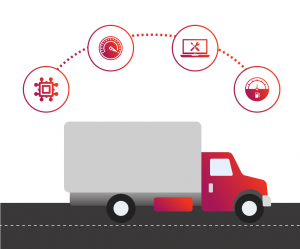Fleet management and Fleet safety are seen as important, not just for fleet operators, but as one of the strategic approaches to improving the safety of the entire vehicle fleet.
The top concern for today’s fleet managers is to have reliable data available on time From route optimization, to vehicle tracking and maintenance to improving fuel consumption, having real-time data on your fleets plays a major role. Fleet managers must be able to make actionable decisions that will reduce the operational expenses of the fleet business without affecting the quality of service.

Some of the best practices in fleet management are as follows:
Vehicle Monitoring in Real-time
By implementing the solutions for Fleet management, you can ensure that your fleet meets customer demands for fast, accurate, and seamless service and ensure operational efficiency. The vehicle-mounted systems can capture GPS Tracker data from a variety of sensors within the vehicle to report equipment status and driver behavior, needed for regulatory compliance.
Using Telematics for fleet monitoring and reduce fuel costs
Most fleet managers use telematics systems to save time and money by improving vehicle maintenance. Instead of scheduling regular maintenance.fleet managers rely on the GPS Tracker data provided by Telematics that includes the actual time when the vehicle was running, including idle time.
Five Fleet Management Best Practices
Today’s dynamic business landscape in fleet operations is challenging because fleet owners must re-evaluate how they operate and which technologies they must use to manage their fleets. New methods in the rapidly changing environment require fresh strategies and technology solutions, such as Telematics and mobile applications. Also, by streamlining the entire workflow, you can manage your processes, improve planning and increase customer service through accurate reports.
Historically, most of the fleet operations have been decentralized, often operating independently and differently. Today, fleet managers recognize that centralizing operations not only increase control, but enable integration that reduces overall costs and improves productivity.
Assessing and Improving driver behavior with Driver Coaching
By training drivers with some of the best practices in fleet management, you can easily assess and improvise the driver behavior of under-performing drivers. This ensures to also encourage behavioral changes to reduce idling time and eliminate speeding, off-route driving, and unplanned stops. The vehicle-mounted systems can capture data from a variety of sensors within the vehicle that report equipment status, driver behavior, and data needed for regulatory compliance.
Ensure that your driver is provided with specific training programs based on the incident types such as over-speeding, hard braking, acceleration, or cornering. You can reduce vehicle accidents and insurance costs by monitoring and improving the complete driver behavior.
Moving to Paperless and Adapting to Digital Connectivity
Some of the leading fleet operations are removing physical paper and manual processing to ensure and gain a competitive advantage in fleet management. The benefits include better equipment management, lower mileage and idle time, shorter billing cycles, cost savings, and more.
Final Words
The overall goal of every fleet manager is to minimize cost, manage compliance, centralize operations and run their fleet efficiently
By implementing these best practices into your business model, fleet managers will soon be able to run their fleet safely, efficiently and make informed decisions with real time insights.





